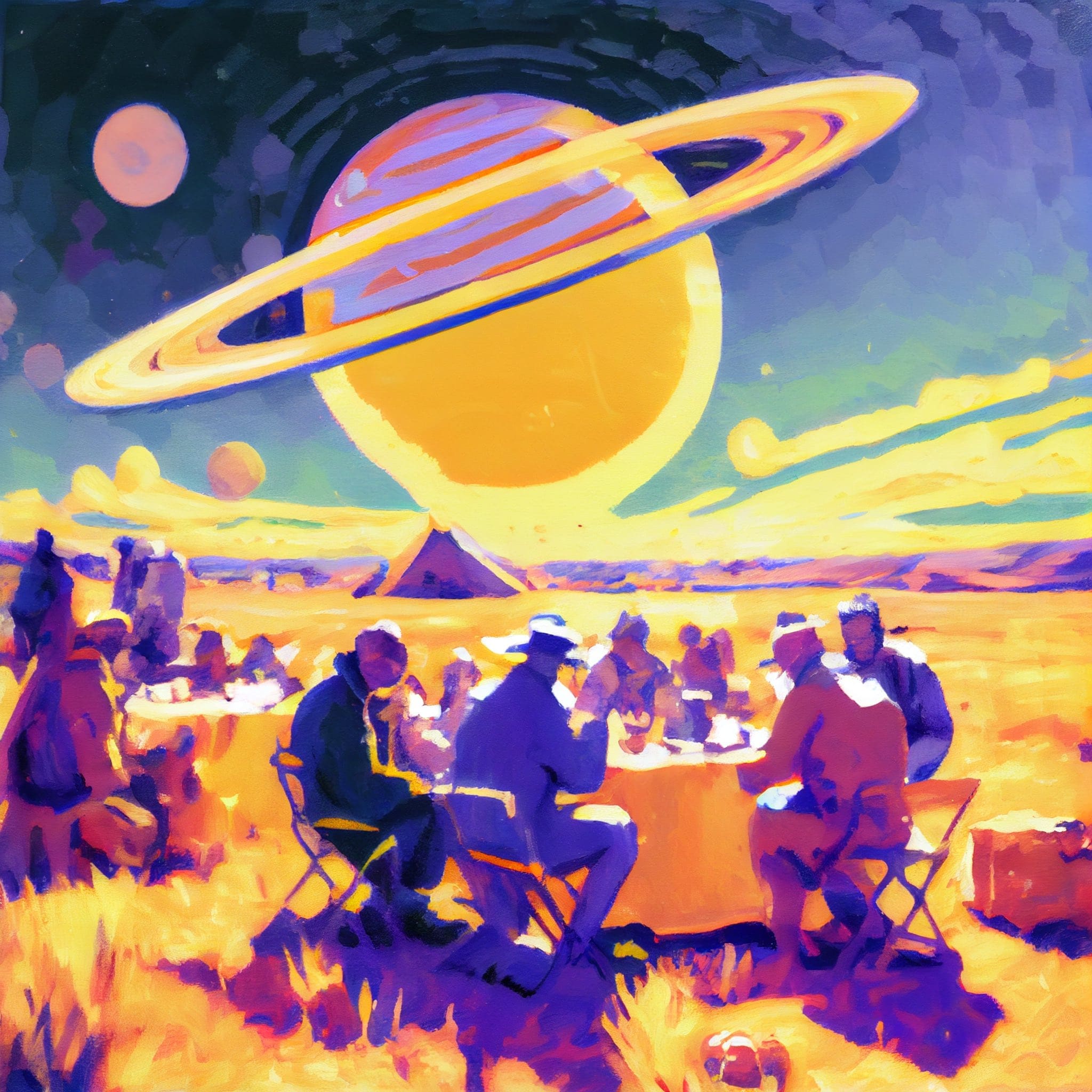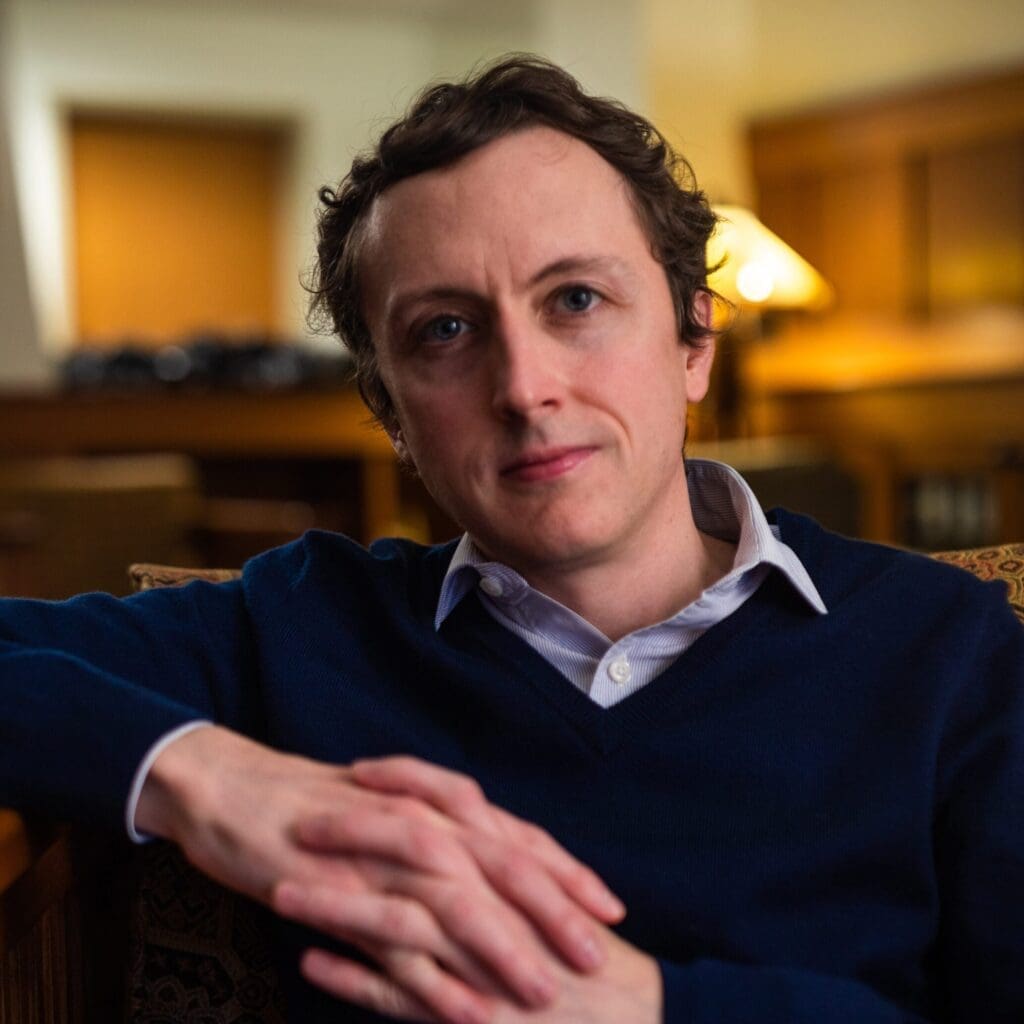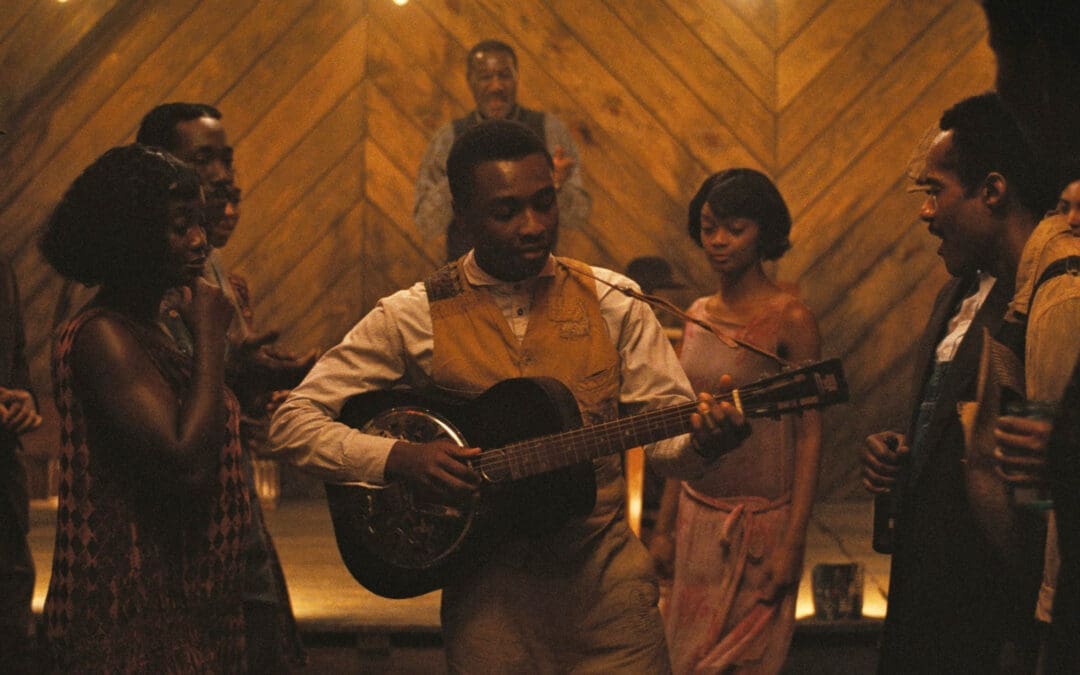T
The act of creation is perhaps the most breathtaking aspect of human nature. When we take stock of what humanity has produced over the course of millennia, the sum total of the advancements in engineering, science, and culture has elevated the spirit of nearly everyone on the planet. This is because there is always a social dimension to creation: we must learn from others to create, and, more often than not, we in turn share our creations with others. From Aristotle’s Lyceum to the freewheeling digital forums on the internet, constructed spaces for creative exchange have had outsize influence on the trajectory of society. We frequently take that influence for granted.
Human creation and creativity are inherently good. Digital technologies, as human creations, thus also have tremendous potential for good. The creation and use of new technology that promotes human connection, moreover, can accelerate the realization of that goodness. The word “technology” itself, as Heidegger points out in The Question Concerning Technology, stems from the Greek word technē, which signifies the notion of a bringing forth—something creative, even poetic. Which brings us to Silicon Valley’s present fascination with one controversial technology whose most recent incarnation has emerged from the cradle of the internet: artificial intelligence, or AI. What is the place of AI in human creativity? Does it, too, have potential for good?
AI systems like the chatbot ChatGPT and the image generator Midjourney have captured the attention of the public and even surprised computer scientists by the speed at which they attained success in replicating certain aspects of the human imagination—something originally thought to be far more difficult than, say, getting a self-driving car to work. To be clear, this isn’t the singularity, or even a good model of cognition. Those things are still a long way off—if they are even attainable. But it is a major breakthrough in getting AI to work in a useful way. These systems rely on a particular AI technique called a generative algorithm. Generative algorithms have the ability to create new things, as opposed to simply analyzing existing things, which AI has traditionally been designed to do. This means that it’s always possible to have a meaningful new conversation with ChatGPT or get an inventive new scene out of Midjourney. By tapping into the imagination of these AIs, creative communities on the internet are laying the groundwork for elaborate fictional universes that will be accessible to a global audience. This has led to a great deal of tension, as journalists, policy-makers, and political activists have grown wary of the potential problems that might arise from an environment that is unmoored from an objective reality.
What is the place of AI in human creativity? Does it, too, have potential for good?
The prevailing social concern is that AI-generated content has been weaponized to spread dangerous disinformation in virtual spaces. In principle, plausible-looking information that is not true can be created about people, places, and events. In many contexts, that is a strength of the technology as a creative tool, but it is also a potential weakness. What we tend to worry about most when it comes to fiction on the internet is that the public at large will be deceived into taking actions that work against their interests. The notorious Deepfake algorithm, which re-animates recorded video of a person, is a technology that could be used toward that end. It, too, relies on a generative algorithm to create a scene that never took place. Attempts to sway public opinion via AI have included a bogus video of the Ukrainian president Volodymyr Zelenskyy surrendering to Russia, another of former speaker of the house Nancy Pelosi appearing to be impaired while giving a speech, and a series of images falsely depicting the arrest of former president Donald Trump.
But a singular focus on the problems associated with AI belies the role it serves for many online communities. A more sober assessment that balances those problems with the utility of the technology is sorely needed. Taking a step back to understand where all the unease is coming from is diagnostic. AI, like many other facets of contemporary life, has fallen prey to a polarized political environment. Its emergence on the internet coincided with the rise of partisan politics there. In America, both political parties use allegations of “fake news” to undermine their opponents because it is so easy to find a fictional narrative that supports a political argument of any orientation. AI isn’t necessary to generate fake content, but it’s a convenient scapegoat, since it does contribute to false narratives, either intentionally or not.
However, this mode of political discourse is easy to identify, and to subsequently dismiss. For example, Deepfakes have not swayed public opinion because they are too easy to debunk. And Deepfake technology is more frequently used in a socially constructive way for video production, where it is replacing the laborious process of creating computer graphics by hand. Thus, attacks on AI represent yet another instance where partisan politics is degrading civility while simultaneously undermining culture. But political concerns aren’t the only ones, especially when AI is considered in a creative context.
In the art world, it has been alleged that AI-generated pieces will soon become indistinguishable from human creative production. The fear is that the market for artwork will eventually collapse as automation drives prices down, causing painters, illustrators, graphic designers, and other professional creatives to seek employment elsewhere. While some art production will inevitably be replaced by AI (say, the creation of stock graphics for marketing), the overall argument assumes that AI is always in competition with human artists. Of course, culture cannot be reduced to a product that must be bought and sold in the capitalist marketplace. Nor can AI replicate every single facet of human ingenuity—it’s largely constrained by the data it was trained with. Thus, AI is not an exclusive competitor to human artists but something different. A better way to think about it is as a new medium, which one can choose to use, much like the situation artists found themselves in with the introduction of film photography in the nineteenth century and digital photography in the twentieth. When you leave the politics and perceived existential dilemma behind, a more hopeful picture of what is really happening on the internet through the use of this new medium comes into focus.
The Portuguese political scientist Bruno Maçães has argued in his recent book History Has Begun that imaginative mythmaking on the internet is upending society in ways that were inconceivable a generation ago. This, Maçães tells us, is a phenomenon that we should not fear but embrace. In his words, “technology has become the new holy writ, the inexhaustible source of the stories by which we order our lives.” Today’s internet is the natural culmination of decades of thought on the future role of media and the engineering to bring new media systems about, beginning in the mid-twentieth century and spanning to the present. A brief overview of the intellectual progression of the technologies that AI depends on will help shed some light on how we got to this moment in history.
The understanding of the internet as a creative space can be traced directly to the media theories of Marshall McLuhan. Far from the bland corporate vision of the internet as an “information superhighway,” McLuhan had a more immersive plan for the media systems of the near future based on where he saw the underlying technology going. “In this electric age,” he says in Understanding Media, “we see ourselves being translated more and more into the form of information, moving toward the technological extension of consciousness.” Propelling this idea, Kevin Kelly, the futurist and founding editor of Wired magazine, dubbed McLuhan “the Patron Saint of the Internet” in 1993 and ensured that it was McLuhan’s thinking on the media that shaped the culture of Silicon Valley. In explaining the investment McLuhan and Kelly had in the project of high-tech creation, the writer Nick Ripatrazone has drawn attention to something not generally associated with Silicon Valley: both were practicing Christians. And like Maçães today, they, too, saw the wellspring of technologically mediated storytelling as a path toward a wholly new and good universe defined by the collective imagination of humanity.

The facility for creation in a digital mode leaned on an engineering effort that made impressive progress in a very short time span, culminating in the arrival of AI on the internet. Commenting in 1965, the computer-graphics pioneer Ivan Sutherland drew a bold connection between the imagination and the opportunities newly invented multimedia systems afforded users: “A display connected to a digital computer gives us a chance to gain familiarity with concepts not realizable in the physical world. It is a looking glass into a mathematical wonderland.” This echoes the contemporaneous thinking of McLuhan, who believed that “electric circuitry” could be “an extension of the central nervous system,” thus allowing consumers of media to transcend the boundaries of the physical world. Through the formalism of computer code, Sutherland was able to instantiate entirely new visual realms, laying the foundation for today’s augmented and virtualized realities.
But the real power of the imagination is its collective dimension, meaning the interfaces designed by Sutherland and others had to be connected together. Thus we find that early internet figures were enamoured of the idea that the imagination could be set loose across a global network limited only by its silicon substrate. Writing in 1990, the internet activist John Perry Barlow was enthusiastic about this possibility:
While it was easy for someone like Barlow to be big on vision after it became apparent that it was technologically possible for every person on earth to unleash their imagination on the internet, the power of the underlying computers was a substantial limitation when it came to actually achieving it. Slow networks, slow processors, and very limited file-storage capacity all contributed to a clunky user experience in the first few decades of the internet’s existence. Moreover, software engineering was immature in this same period, forcing developers to spend a lot of time programming things from scratch because of a dearth of software frameworks and user communities for languages and tools—both essential sources of reusable code. This changed in the first decade of the twenty-first century with the appearance of broadband, smartphones, and colossal back-end data centres. The software running on top of these hardware systems consisted of common platforms and mature protocols, meaning there was far less overhead involved in creating something new.
This system works well. Anyone with some basic programming skill can now create highly usable software and release it globally without expending much time and money. Blogging in 2007, the venture capitalist Marc Andreessen observed that these technological innovations were finally enabling the imagination to run wild: “The world is a very malleable place. If you know what you want, and you go for it with maximum energy and drive and passion, the world will often reconfigure itself around you much more quickly and easily than you would think.” Andreessen’s world was one where software systems, running within the internet, could alter circumstances in the physical world to conform to the programmer’s vision. For instance, services that existed physically like shopping, banking, and entertainment were virtualized and enhanced. On the one hand, this has disrupted the economy in profound ways by moving more of life online, while on the other, consumers have a clear preference for it. As Andreessen famously put it in an op-ed for the Wall Street Journal, “Software is eating the world.”
Even so, minds within the technology world currently believe that this mode of creation is still far too constrained. The act of programming continues to require human effort and is limited to what the mind’s eye can project when a person is behind the keyboard. Alternatives are emerging from the field of AI, which is designing algorithms that can work tirelessly for free and, more importantly, surprise people with synthetically imagined outputs for many different applications. Nvidia CEO Jensen Huang believes in a future of computing where the programmer is replaced by a more efficient and inventive AI. As he has emphasized in an interview with MIT Technology Review, “Software is eating the world, but AI is going to eat software.”
Nvidia makes graphics processing units (GPUs), powerful hardware components that can both render virtual environments in real time for a computing device’s display and accelerate the primitive operations necessary for modern AI algorithms to learn from information. The twenty-first-century AI paradigm is frequently referred to as “programming with data,” where large datasets collected from the internet are used to provide examples to an algorithm of what it should learn to do. This could be the generation of program source code, but more commonly the task is to solve a problem in a way that cannot be described by a human programmer using a conventional programming language—for example, the creation of a program that can generate an infinite number of different-looking worlds for a virtual environment. The creative arts can expect an influx of AIs that will augment the work done by animators, special effects shops, and graphic design studios in the very near future thanks to this new paradigm.
AI is a product of human ingenuity; thus, any AI necessarily carries with it some of the humanity that underpins creativity.
More broadly, AI will be the foundation of what has been described as the “metaverse,” a newly emerging and controversial immersive virtual space that Meta CEO Mark Zuckerberg has characterized as an “embodied internet.” Users of this successor to today’s internet will notice a gradual change in the interfaces necessary to experience the new information network, first in the shift to augmented-reality software running on a smartphone, then away from phone displays to peripherals that trick the body into thinking it is someplace else. Zuckerberg feels so strongly about the metaverse concept that he has staked the future of his stable of technology companies, including Facebook, Instagram, and WhatsApp, on it. AI will no doubt feature prominently in the metaverse, both as a mechanism for the creation of its virtual worlds and as a “technological extension of consciousness,” as McLuhan envisioned, existing within it to interact with users. But is Meta’s somewhat dystopian corporate strategy really what the globe needs to realize the creative potential of AI? Perhaps an instantiation of the technology that is not as pervasive can be more meaningful.
In a recent interview providing a retrospective of his long career in Silicon Valley, Kelly had this perspective on AI: “Because AI operates so close to our own inner self and identity, we are headed into a century-long identity crisis.” AI is a product of human ingenuity; thus, any AI necessarily carries with it some of the humanity that underpins creativity. In a piece that appeared in the literary magazine n+1, the writer Meghan O’Gieblyn argues that the human mind and generative algorithms are both channels through which creativity flows from a mysterious source to the output that we appreciate:
Just as algorithms manipulate discrete symbols, creating new lines of code via endless combinations of 0s and 1s, so writers build stories by reassembling the basic tropes and structures that are encoded in the world’s earliest myths, often—when things are going well—without fully realizing what they are doing. The most fertile creative states, like the most transcendent spiritual experiences, dissolve consciousness and turn the artist into an inanimate tool—a channel, a conduit.
AI creations that are intriguing to artists tend to replicate a radical mode of innovation present in works like Duchamp’s Nude Descending a Staircase, No. 2 or Joyce’s Finnegans Wake. Incidentally, this is exactly how McLuhan envisioned an ideal media system would operate: as a conduit through which a rich pool of information would assemble in captivatingly novel configurations, mirroring the human experience of information ingestion and exchange from point to point. AI is well suited to the internet, as its success is predicated on its ability to learn from the vast quantities of online data generated by ordinary people. This is perhaps why earlier attempts to create AI using games and business-productivity tasks failed—they were confined to domains with limited social and hence creative potential. O’Gieblyn has written extensively on the intersection between faith and technology, emphasizing that an essence of spirituality seems to be imparted in sophisticated human creations like AI, whether we like it or not. The communal aspect of the technology is key to understanding why this might occur, because it inherently leads to something greater than the individual.
Technologies with a social component cannot be studied in isolation from the communities that use them—they are intertwined, as McLuhan envisioned. Ever the optimist, he underscored that “electric technology fosters and encourages unification and involvement.” This is exemplified by the embrace of the arts by engineers working on AI. For the first time ever this year, the world’s premier technical conference on visual AI technologies hosted an art gallery open to anyone making AI art. Luba Elliott, an artistic curator and researcher, has organized a series of workshops with collaborators on AI and creativity to bring coders and artists into dialogue. Devi Parikh, a professor in the School of Computing at the Georgia Institute of Technology, invents new generative algorithms in her day job and moonlights as a “generative artist” at night. Engineers like Parikh are pioneering AI systems that can process both visual data and natural language to make them easy to use. One need not have any familiarity with computer programming—the ubiquitous “prompt” interface allows anyone to simply ask the AI to generate a picture of whatever is in their imagination.
The ability of non-experts to use these systems has allowed a new generation of artists to thrive. Memo Akten, Sofia Crespo, Anna Ridler, Scott Eaton, and Helena Sarin are all working with the medium of AI. The generative aspect of the medium allows their work to be dynamic; an individual piece can resemble a living organism. This also creates the potential for interactive exhibits that can deliver a unique experience on each visit. The filmmaker and commercial artist Karen X. Cheng has garnered much attention for her Lunar New Year metaverse environment, where spectators are invited to augment reality on the fly using an AI technique called neural radiance fields. While that virtual exhibit was commissioned by a major global corporation, the democratization of this technology means that budding artists don’t require significant financial backing to produce meaningful work. Unconventional outsider artists better represent the spirit of the internet, which does not conform to the norms of the fine art world. For example, the generative artists Infinite Vibes and CoffeeVectors operate under pseudonyms on Twitter, releasing a mix of original and shared art, as well as technical information on new algorithms.
The AI art movement is also forming collectives to bring programmers, engineers, and creatives together to build out infrastructure for grander projects that require collaboration for success. The Generative Artist Club was initially started to better coordinate the activities of generative artists who were spread across social media platforms, making it difficult for them to share knowledge and experience. The club’s mission statement notes that its aims are now far more ambitious: “Our artwork manifests through digital mediums, crypto environments, robotics, and light.” The convergence of art with complex systems like robotics is fundamentally new, and something that could not be easily accomplished by solo artists. Specific algorithms have also spawned their own communities convening in online social spaces like Discord. Midjourney’s Discord community boasts a membership of fourteen million users, which is a testament to the tool’s general appeal. Does all of this social activity around AI tell us something about why it has become such a phenomenon on the internet? A common theme emerges in the digital communion between people and machines. The joy that comes from the shared experience of creating with others, be they real or artificial, is elevating that communion to something resembling McLuhan’s original vision for the internet.
Of course, techno utopianism can lead us astray in our understanding of the strengths and weaknesses of this new technology. There can be no doubt that within the stories that AI tells us there is tension between the creative act and malicious deception, especially when both activities use the same set of software tools to achieve their end goals. We can’t ignore the social problems, nor the gut-level discomfort many people experience when confronted by AI, but they need to be properly contextualized through reasonable dialogue. When I asked her about what the field of AI can do to improve its reputation, Parikh had this to say:
I think accessible and educational material that helps laypeople understand the technology better would go a long way. I think telling the stories of how artists and designers and content creators in various capacities are leveraging these tools would help. Telling the story of how these tools democratize and enhance human creative expression would help. Sharing the arc of technology, making connections to analogous points in the past to help laypeople build perspective and frameworks about how to think about this would help. And finally, forums of communication that are more nuanced and balanced would help, but that’s not about AI, that’s a much broader issue.
By not falling prey to politicized sensationalism and being generous with our time to help others understand the positive uses of newly emerging technology, we can, without hesitation, be satisfied with a creation of AI. It is not the existential risk we might think it is. It is an extension of who we are. It is indeed very good.



